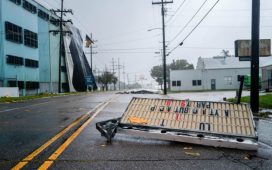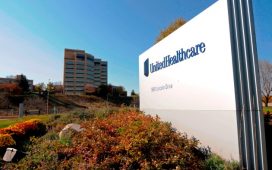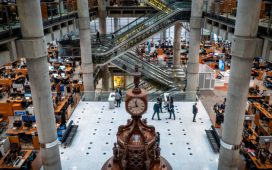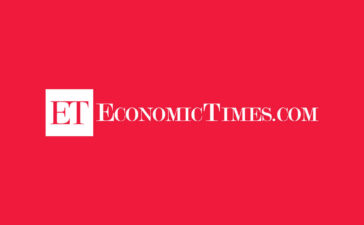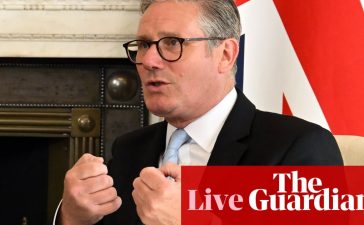Lloyd’s of London is one of those British corporate brands known the world over by people who might not even know what it does. Lloyd’s is, of course, the world’s largest insurance marketplace, where thousands of companies, underwriters and brokers come together to price and sell billions of dollars of risk premiums every year. It’s a business that is booming in an ever riskier world; last year was Lloyd’s most profitable since 2007.
The company is at the epicentre of global underwriting, but it started in a humble coffee shop on the Thames, where 17th-century trader Edward Lloyd published shipping news and provided a gathering place for merchants looking to cut deals and exchange information.
“Back then, one in five voyages ended up in some form of trouble, with pirates or weather or something,” says John Neal, the current chief executive of Lloyd’s, with whom I’m meeting on a sunny afternoon in New York to discuss how insurers think about their business at a moment when so many risk vectors — from geopolitical to monetary, to technological, demographic and climate-related — are in flux.
Neal, who appears in the standard middle-aged executive garb of dark suit, tie, leather shoes and briefcase, strikes me as a pretty easy-going person for someone whose job depends on calculating the probability of disaster. But then, Lloyd’s has been doing that since 1652, when, he tells me, “a bunch of merchants said, ‘Why don’t we insure the cargo of the ships and take 20 per cent of the proceeds?’ The way they did it was to write the cargo down on a list and put their names underneath. So, that’s how the term ‘underwriter’ came to be.”
This origin story is why Neal has chosen to meet me in Conwell Coffee Hall at 20 Exchange Place in the city’s financial district, close to the South Street Seaport and steps from the famous Charging Bull statue. Conwell’s, which opened only a few months ago, is housed in the lobby of a stunning Art Deco skyscraper dating from 1931. With its soaring ceilings and 45 different types of marble, it was designed to represent “corporate America’s global reach”, according to one architectural historian.
Today, patrons sit in spacious, leather-chaired luxury, enjoying top-notch coffee, pastries and light luncheon fare. After 5pm, cocktails are mixed from behind a former bank teller’s window. My meeting with Neal should perhaps be called “tea with the FT” rather than lunch, given that it’s 4pm. This was the only time slot that I could get, as Neal is busy. He is in town to meet with UN secretary-general António Guterres to discuss, among other matters, how best to protect grain and fertiliser shipments to and from Ukraine.
He’s also seeing financial executives, chief executives and government officials to push a more proactive stance towards risk management. Finally, he’s keeping tabs on the almost 50 per cent of Lloyd’s underwriting done in the US, the company’s single biggest market.
Like most insurance markets, it’s an increasingly complex one, thanks to everything from a growth in cyber terrorism to rising debt levels, political populism, infrastructure and supply-chain disasters and two hot wars.
Then, of course, there’s the weather. Neal nods as I regale him with stories of rising homeowners’ premiums in coastal areas (my own Brooklyn neighbourhood included). Nationally, premiums are up 23 per cent over the past year, and they have risen by high double digits in some particularly vulnerable areas. We discuss the bizarre fact that multimillion-dollar condos continue to be built and bought in the middle of Miami flood zones.
“You’ll never find an insurer saying, ‘I don’t believe in climate change,’” he notes, as we eye the lunch menu for something light yet substantial enough to call a meal. “The frequency and severity of weather-related losses are exponential. The US had the highest number of convective thunderstorms in 10 years last year, and it’s already worse this year.”
Menu
Conwell Coffee Hall
6 Hanover Street, New York, NY 10005
Iced oat-milk latte $5.50
Cappuccino $5
Mineral water $9.50
Chocolate-chip cookie $3.50
Fruit plate $10
Total inc tax and service $46.37
I decide on the fruit plate, along with an iced oat-milk latte to combat the heat, which, appropriately enough for this conversation, is sweltering. Despite being suited up, Neal goes for a hot, full-fat cappuccino and a chocolate-chip cookie. We walk up to the glassed-in teller booth to place our order and I add a big bottle of cold still water to the tab, along with plenty of ice.
What’s strange is how sanguine many people still appear to be about the risks of extreme weather, particularly in the US. “There’s no reason for these natural catastrophes not to be insured,” says Neal, given that weather-related insured losses are at $130bn at the moment, up from $70bn 20 years ago, and the insurance industry itself is a juggernaut with more than $30tn of assets under management. And yet, he says, “Even in the US, in the first world, you’ll see after a hurricane blasts through Florida, only 60-70 per cent of the damage is covered.”
Part of the problem is that premiums have gone up so dramatically that many people in places such as Florida, Louisiana, California and even New York are opting to “self-insure”. That means simply putting aside enough money to cover whatever damage might occur when the next hurricane, fire or flood hits, rather than paying nosebleed premiums.
But this is leading to a very bifurcated market in many areas, where both insurance and self-insurance are luxuries for the rich, while the most vulnerable can afford neither. It’s not a solution to the regional climate catastrophes that are happening more and more frequently on America’s coasts, and in many other parts of the world.
This is one of Neal’s passion points. Insurance, he believes, “is at a tipping point” that will require new kinds of partnerships between the public and private sector to manage skyrocketing risk. Individuals simply can’t handle the rising premiums for events such as natural disasters on their own. “You’ve got to say to banks, for example, that if you are lending money for an asset, like a home [in a risky area], you have to accept some more responsibility [for costs in case of disaster].”
The public sector, too, has to start thinking about the need for measures such as flood walls in coastal areas, or better forest management in brush-fire zones. While the US has been slow to adopt these measures, there are successful examples of systemic climate risk management in other countries. New Zealand, a country with thousands of earthquakes a year, has a public agency that helps underwrite risks for individuals. While the US government shared losses on terrorism insurance in the wake of 9/11, it has been slower to act on climate issues.
Meanwhile, “the insurers have gotten risk smarter,” Neal says, reducing coverage in the most problematic areas. Lloyd’s more than doubled its underwriting profits last year because it had little exposure to disasters such as the Turkish earthquake, convective thunderstorms in the mainland US and wildfires in Hawaii.
“But the answer can’t be, ‘Sorry, we’re not going to insure it at all in places like California or Florida.’” The end result of that will surely be massive economic and human costs.
Rising climate risk is, of course, compounded by many other kinds of risk — more than the world has ever seen, according to Neal. He’s leaning forward and using his hands to speak now; I glance around to see if any else is paying attention to us but the patrons are mostly staring at laptops or phones.
“I put up this chart recently with my own leadership team, on the last 200 years of history. I said, there’s been three times when insurance really mattered over that period. Between 1850 and 1870 the world was basically in a war with itself. Civil war in the US, Europe realigning itself, working it all out. You had huge changes in infrastructure, governments and political frameworks.”
The second really important period was post-1945, “when the world had to reconstruct itself”. Now, says Neal, “you’ve got systemic risk”, from financial crises to the fallout of interest-rate hikes and inflation, to pandemics, war and supply-chain issues, “really evidencing the global connectedness of everything we do”.
Add to that intellectual property risk, the vast majority of which is uninsured, particularly outside the US, and geopolitical shifts such as “the battle between protectionism and globalisation”. Neal concludes that “the complexity of what we’re dealing with today is dramatically different than in the past. It’s terrible.”
Fortunately, our food is quite the opposite. Our meal may be small, but it’s perfectly formed. My fruit plate is beautifully sculptural, with finely sliced mangos, kiwis, pears and berries. Neal’s cookie is the kind Americans tend to love — big, warm, gooey and oozing with chocolate. He doesn’t have to worry about the calories, soon to be supplemented by dinner at a very good Greek restaurant, since he’s a vigorous cyclist.
I ask him which risks, of all those he has to consider, keep him up at night. Not much does, apparently. “Where there’s a problem, there’s usually a solution,” he says with equanimity. But aside from climate, I’m interested to hear him cite rising US debt levels as a worry before, say, the risk of a Donald Trump presidency. Joe Biden, if he’s the winner, is “going to print a lot of money. And is that a good thing? Is that going to work? You just get a sense of instability and uncertainty.”
While I admit that I’m the rare US liberal that does worry about debt loads, I press Neal on the Trump risk. While he admits to worries about Trump’s ability to lead, as well as his lack of support for Ukraine and the potential fallout for Europe and the world, the biggest issue for him seems to be that the two candidates are so very different.
“You could make a risk bet on EVs [electric vehicles], for example, under Biden, and it would be entirely different under Trump. So, how do you begin to think about all that as you’re putting together deals?”
True enough, but that’s not the first thing that comes to my mind when I ponder Trump II. I can’t help feeling that in this, Neal reflects a troubling sanguineness about the risks of another Trump presidency that I find prevalent within the business community as a whole.
I’ve spoken to many chief executives and business leaders who, when asked about the impact of a second Trump term, seem to shrug off the possibility of, say, an end to the rule of law in the world’s largest economy. While political risk is nearly impossible to model mathematically, this strikes me as dangerously naive. Business seems to hold out hope for some repeat of a loud but laissez-faire Trump. The reality is likely to be much harder-edged, insular, xenophobic and protectionist.
Neal is also sanguine about UK politics, albeit with more reason. “If you think of the election in the UK — I mean this in a nice way — it almost doesn’t make any difference [who wins]. It’s quite a stable society. From a business point of view, we need change, yes please. But the politicians are so centrist in the way in which they’re leading . . . whatever the outcome is fine.”
Likewise, he tends to believe that social media is overplaying the risks of cultural upheaval in the rich world in general. “We are totally influenced by the noisy 5 per cent. The majority is quiet.”
I hope he’s right, and that the sensible majority shows up at the polls, particularly in the US and France, where Emmanuel Macron has called a snap election since my meeting with Neal.
The lighting in Conwell’s has dimmed in preparation for evening. The students and tourists have thinned out, and a smarter set seems to be moving in for the early cocktail hour. I ask Neal how the insurance business model will have to shift to cope with all the risk he’s outlined. Certainly, he says, hiring is changing, with the industry moving from economists and actuaries to “more scientists, data analysts and mathematicians”.
Technology is shifting, too. As in every business, insurers are thinking about ways to monetise and use big data. “We have satellite imagery, so we know when something has happened, as soon as it has happened. So, why can’t we find a way of paying a claim almost immediately? The industry sometimes takes too long to do that.” I’m sure many premium payers would agree.
Our time is up, and Neal is off to his next meeting. I get up to investigate the rest of the space, in particular an imposing mural above the bar that looks like something FDR’s Works Progress Administration would have commissioned. I discover that it is a tribute to a 1920s financial tycoon, JG Conwell, a coffee trader who died in mysterious circumstances and who ran a company called Life and Trust that was once based in the building.
But later, when I fact check all this at home, I discover something even more interesting: the entire story is fabricated. Conwell’s is actually an elaborate promotional pop-up for an immersive theatre experience called Life and Trust, run by the people who created the cult favourite Sleep No More, in which theatregoers become part of a bizarre, noir version of Macbeth. Life and Trust bills itself as a “tale of money, sex and power in the heart of the Financial District”. I don’t know what any of it has to do with Neal, or with insurance. But I decide to buy a ticket for the play another night. After all, no risk, no reward.
Rana Foroohar is the FT’s global business editor
Find out about our latest stories first — follow FTWeekend on Instagram and X, and subscribe to our podcast Life and Art wherever you listen
Letter in response to this article:

